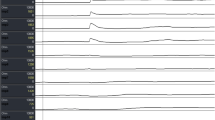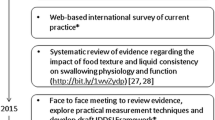Abstract
The past few years were an exciting time in the study of esophageal motor disorders because new technologies emerged to study esophageal motor function and bolus transit. Although conventional manometry was long considered the “gold standard” for defining esophageal motor disorders, many technologic improvements occurred due to advances in transducer technology, computerization, and graphic data presentation. In addition, a relatively new technology, intraluminal impedance, was incorporated into manometric modalities. The most sophisticated systems now include combined high-resolution manometry with high-resolution impedance. Although these techniques provide more detailed information about esophageal function, whether they improve our ability to diagnose and treat patients more effectively is debatable. However, more recent data support that these advances actually improve our ability to diagnose and treat esophageal motor disorders. This article provides an update on these technologies in clinical practice and how they may be helpful in the future.
Similar content being viewed by others
References and Recommended Reading
Spieker MR: Evaluating dysphagia. Am Fam Physician 2000, 61:3639–3648.
Cook IJ, Kahrilas PJ: AGA technical review on management of oropharyngeal dysphagia. Gastroenterology 1999, 116:455–478.
Nayar DS, Khandwala F, Achkar E, et al.: Esophageal manometry: assessment of interpreter consistency. Clin Gastroenterol Hepatol 2005, 3:218–224.
Clouse RE, Staiano A: Topography of the esophageal peristaltic pressure wave. Am J Physiol 1991, 261:G677–G684.
Castell JA, Dalton CB, Castell DO: Pharyngeal and upper esophageal sphincter manometry in humans. Am J Physiol 1990, 258:G173–G178.
Liu J, Parashar VK, Mittal RK: Asymmetry of lower esophageal sphincter pressure: is it related to the muscle thickness or its shape? Am J Physiol 1997, 272:G1509–G1517.
Clouse RE, Staiano A, Alrakawi A, Haroian L: Application of topographical methods to clinical esophageal manometry. Am J Gastroenterol 2000, 95:2720–2730.
Pandolfino JE, Ghosh SK, Zhang Q, et al.: Quantifying EGJ morphology and relaxation with high-resolution manometry: a study of 75 asymptomatic volunteers. Am J Physiol Gastrointest Liver Physiol 2006, 290:G1033–G1040.
Grubel C, Hiscock R, Hebbard G: Value of spatiotemporal representation of manometric data. Clin Gastroenterol Hepatol 2008, 6:525–530.
Pandolfino JE, Ghosh SK, Rice J, et al.: Classifying esophageal motility by pressure topography characteristics: a study of 400 patients and 75 controls. Am J Gastroenterol 2008, 103:27–37.
Pandolfino JE, Kwiatek MA, Nealis T, et al.: Achalasia: a new clinically relevant classification by high-resolution manometry. Gastroenterology 2008, 135:1526–1533.
Fox MR, Bredenoord AJ: Oesophageal high-resolution manometry: moving from research into clinical practice. Gut 2008, 57:405–423.
Kahrilas PJ, Ghosh SK, Pandolfino JE: Esophageal motility disorders in terms of pressure topography: the Chicago classification. J Clin Gastroenterol 2008, 42:627–635.
Fass J, Silny J, Braun J, et al.: Measuring esophageal motility with a new intraluminal impedance device. First clinical results in reflux patients. Scand J Gastroenterol 1994, 29:693–702.
Sifrim D, Castell D, Dent J, Kahrilas PJ: Gastro-oesophageal reflux monitoring: review and consensus report on detection and definitions of acid, non-acid, and gas reflux. Gut 2004, 53:1024–1031.
Simren M, Silny J, Holloway R, et al.: Relevance of ineffective oesophageal motility during oesophageal acid clearance. Gut 2003, 52:784–790.
Nguyen HN, Silny J, Albers D, et al.: Dynamics of esophageal bolus transport in healthy subjects studied using multiple intraluminal impedancometry. Am J Physiol 1997, 273:G958–G964.
Srinivasan R, Vela MF, Katz PO, et al.: Esophageal function testing using multichannel intraluminal impedance. Am J Physiol Gastrointest Liver Physiol 2001, 280:G457–G462.
Imam H, Shay S, Ali A, Baker M: Bolus transit patterns in healthy subjects: a study using simultaneous impedance monitoring, videoesophagram, and esophageal manometry. Am J Physiol Gastrointest Liver Physiol 2005, 288:G1000–G1006.
Tutuian R, Vela MF, Balaji NS, et al.: Esophageal function testing with combined multichannel intraluminal impedance and manometry: multicenter study in healthy volunteers. Clin Gastroenterol Hepatol 2003, 1:174–182.
Tutuian R, Castell DO: Combined multichannel intraluminal impedance and manometry clarifies esophageal function abnormalities: study in 350 patients. Am J Gastroenterol 2004, 99:1011–1019.
Tutuian R, Mainie I, Agrawal A, et al.: Symptom and function heterogenicity among patients with distal esophageal spasm: studies using combined impedance-manometry. Am J Gastroenterol 2006, 101:464–469.
Bredenoord AJ, Tutuian R, Smout AJ, Castell DO: Technology review: Esophageal impedance monitoring. Am J Gastroenterol 2007, 102:187–194.
Bredenoord AJ, Weusten BL, Sifrim D, et al.: Aerophagia, gastric, and supragastric belching: a study using intraluminal electrical impedance monitoring. Gut 2004, 53:1561–1565.
Frieling T, Hermann S, Kuhlbusch R, et al.: Comparison between intraluminal multiple electric impedance measurement and manometry in the human oesophagus. Neurogastroenterol Motil 1996, 8:45–50.
Bulsiewicz WJ, Kahrilas PJ, Kwiatek MA, et al.: Esophageal pressure topography criteria indicative of incomplete bolus clearance: a study utilizing high-resolution impedance manometry. Am J Gastroenterol 2009, submitted for publication.
Kahrilas PJ, Dodds WJ, Hogan WJ: Effect of peristaltic dysfunction on esophageal volume clearance. Gastroenterology 1988, 94:73–80.
Ren J, Massey BT, Dodds WJ, et al.: Determinants of intrabolus pressure during esophageal peristaltic bolus transport. Am J Physiol 1993, 264:G407–G413.
Author information
Authors and Affiliations
Corresponding author
Rights and permissions
About this article
Cite this article
Pandolfino, J.E., Bulsiewicz, W.J. Evaluation of esophageal motor disorders in the era of high-resolution manometry and intraluminal impedance. Curr Gastroenterol Rep 11, 182–189 (2009). https://doi.org/10.1007/s11894-009-0029-z
Published:
Issue Date:
DOI: https://doi.org/10.1007/s11894-009-0029-z




